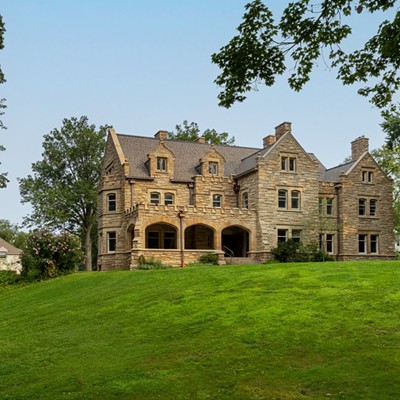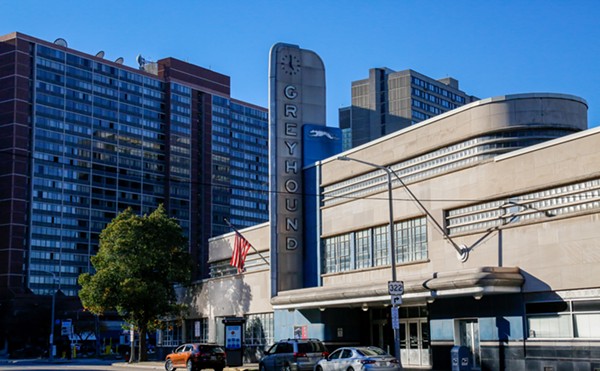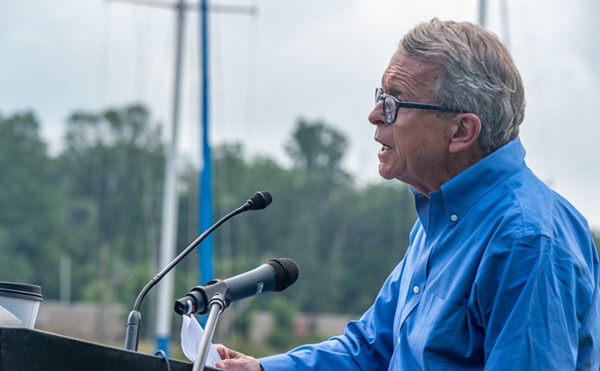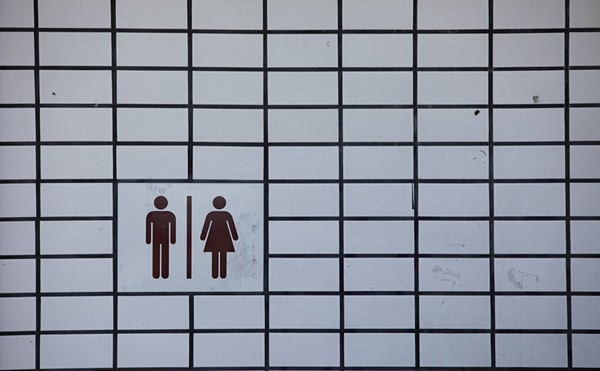But growing locally disappeared as city life began to modernize, fast food took over street corners, and rural and urban America grew apart. By the end of the 20th century, only a handful of community gardens survived. Many outlying farms had switched to "commodity" crops like corn and soybeans, used in factory food manufacturing. Yet Cleveland was starting to take a renewed interest in local food.
It probably started with the chefs, back when the city was widely considered a dining backwater with a tired roster of neighborhood spaghetti emporiums, chop suey joints, traditional eastern European diners, and musty steakhouses.
Parker Bosley was working at Sammy's in the Flats in the mid-'80s when he realized he didn't like the way his food was turning out.
"It seemed to me that nothing was really great because the products weren't great. I said, 'I grew up in Ohio, I know there are good tomatoes, there's good chicken.' But the restaurants were dominated by industrial food. So I went out and started asking farmers if they would sell to me."
He was soon followed by other chefs like Zack Bruell and Michael Symon, who realized that working more closely with growers would get them better ingredients than taking a chance on something shipped 3,000 miles. Within a decade, the city was dotted with like-minded chefs, seeking out just-picked vegetables and fruit from nearby orchards, cheese made by Amish farmers, and beef raised in the pastures of Portage County.
Locally sourced ingredients became more readiliy available to everyday consumers too when Donita Anderson started the North Union Farmers Market at Shaker Square in 1995.
By the time Cleveland was starting to think about sustainability in the mid-2000s, there were sprouts all over the region. Cuyahoga Valley National Park's Countryside Conservancy program, which offers homesteads to a new generation of farmers, began in 1999. The Ohio State University Extension's Cuyahoga branch had started its market garden program to train urban farmers in growing for sale in 2006. The number of farmers markets in Cuyahoga County alone climbed from three to more than two dozen within a decade. At the same time, Community Supported Agriculture, or CSAs, started providing "shares" of locally grown food each week — and have exploded in popularity in recent years.
And the City of Cleveland took notice of it all.
The Office of Sustainability was created in the spring of 2005 under former Mayor Jane Campbell and carried on into the tenure of Frank Jackson. Its initial mission was simple: Find ways to save money. When Campbell hired Andrew Watterson as the office's first manager, the idea was that he would find enough savings to justify his salary.
"When I first came, there was more emphasis on green building, energy efficiency, renewable energy, and waste recycling," says Watterson, who left the city in December to join a local sustainability consulting firm. "[Local food] emerged as something residents cared about and we should look at."
In 2007, the city created the Cleveland-Cuyahoga County Food Policy Coalition. The group brought together various players to develop a strategy for regional food production, distribution, and consumption.
The group released a 2010 report titled "The 25% Shift: The Benefits of Food Localization for Northeast Ohio and How to Realize Them." It has become a reference point for many of the current conversations about expanding the local food market. It also marked a giant leap in ambition, beyond just getting city residents to eat healthier.
The coalition extended Cleveland's "25 percent local" food goal to the entire Greater Cleveland area — 16 counties in all — and created a blueprint of the region's assets and challenges, and what steps would need to be taken. The prize is surely significant: the promise of almost 28,000 new jobs (including 10,000 new farmers and farm workers), $4.2 billion in economic activity, and $126 million in new tax collections.
In 2009, the city convened a summit at Public Hall that served as the launch of Sustainable Cleveland 2019. The guest list included key players from across the region invited to brainstorm, set goals, and form working groups.
Jenita McGowan, the newly named head of the city's sustainability department, describes the office as "a distributed leadership model" — one that aims to make use of energy already being poured into the effort.
"Leadership happens at all levels to change our culture to incorporate sustainability into the economy," says McGowan, who previously served under Watterson. "The '25 percent report' is informing people's work around town. It does a great job of presenting a snapshot of where we are now."
Cleveland can be thanked for coming up with the "25 percent local" mandate, but it's harder to say whether it has come up with a plan that has any hope of succeeding — and whether the city itself will play a significant role in making it happen.











